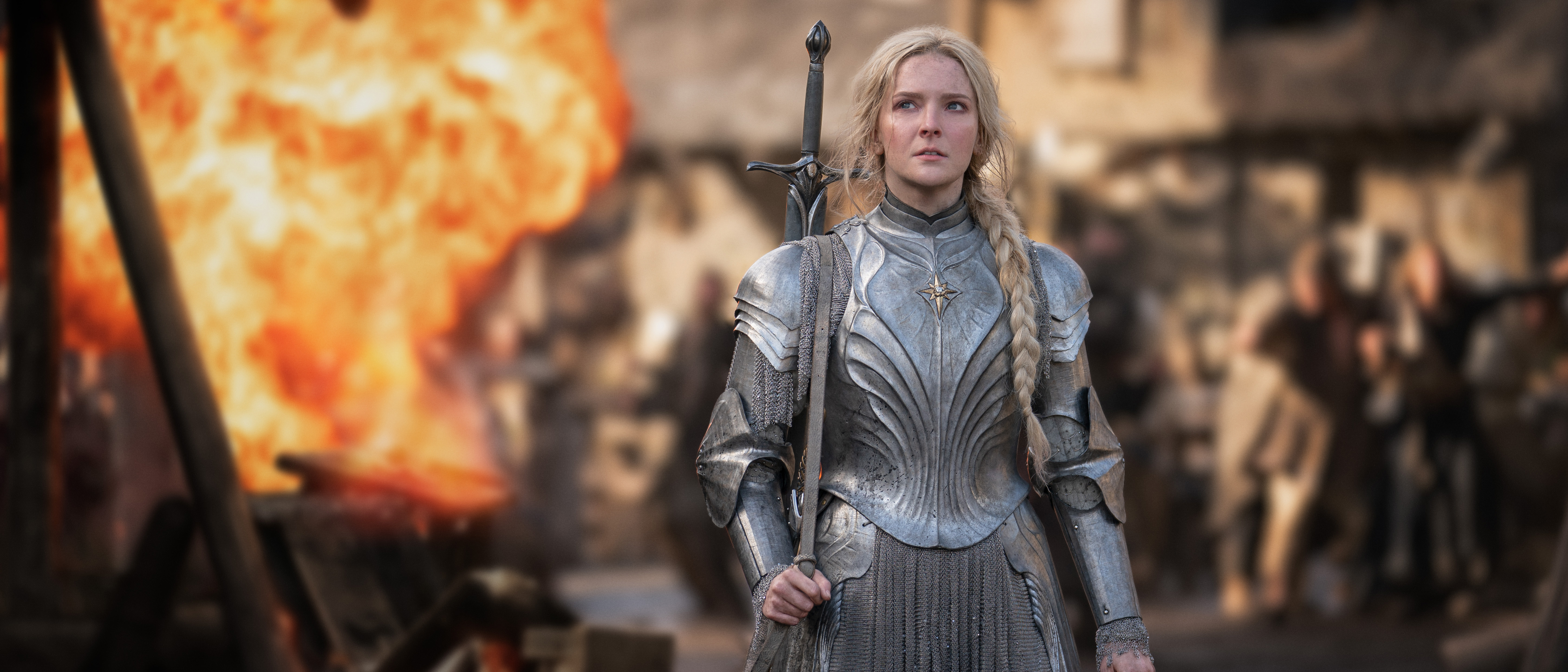TechRadar Verdict
The Rings of Power is the new prestige TV jewel in Prime Video's crown. It's epic fantasy at its magical best; a series that simultaneously honors J.R.R. Tolkien's legendary works and tells a captivating original tale in a fictional world steeped in a breathtaking amount of history. It isn't perfect – plot pacing issues and a lack of action prevent it from being so. For a big-budget series that could have spelled the end of Amazon's streaming service, though, The Rings of Power represents the dawn of an illustrious and spellbinding age for Prime Video instead.
Pros
- +
Fascinating and mysterious Tolkien-esque story
- +
Captures the core essence of what makes Lord of the Rings so great
- +
Dazzlingly talented cast
- +
Visual and aural feast
- +
Immeasurable amount of secrets waiting to be uncovered
Cons
- -
Disappointing lack of action
- -
Occasionally problematic plot pacing
Why you can trust TechRadar
- Launching on Prime Video on September 1 (US) and September 2 (worldwide)
- Created by JD Payne and Patrick McKay
- Based on J.R.R. Tolkien's legendary Lord of the Rings novels
- Set during Middle-earth's Second Age
- First season comprises 10 episodes
- Morfydd Clark, Robert Aramayo, Cynthia Addai-Robinson, and Markella Kavenagh among 23-strong main cast
- First season cost $465 million
The Lord of the Rings: The Rings of Power represents a massive gamble for Amazon Studios. The multinational entertainment division has enjoyed relative success with its other movie and TV offerings, including The Boys and Invincible. However, Prime Video – Amazon’s streaming service – lacks a cultural behemoth, such as Netflix’s Stranger Things, the Disney-owned Marvel Cinematic Universe (MCU), or HBO's Game of Thrones within its extensive back catalog.
With The Rings of Power, a Prime Video series set in legendary author J.R.R. Tolkien’s fantastical world of Middle-earth, Amazon has the opportunity to muscle in on Netflix's, Disney Plus’ and HBO Max's prestige TV turf. Such aspirations are fraught with danger, though – after all, The Rings of Power’s first season cost $465 million. If it completes its $1 billion, five-season run, it’ll be the most expensive show ever made. And should it struggle to obtain positive reviews, the negative financial and reputational impact on Amazon could be catastrophic. Simply put, failure is not an option.
It’s just as well, then, that The Rings of Power is a pricey gamble that pays off in dazzling and enchanting fashion. It’s high fantasy at its finest; an enthralling, drama-fuelled show that’s breathtaking in scope and scale, and one so meticulously crafted Tolkien himself would approve.
Dawn of a new age
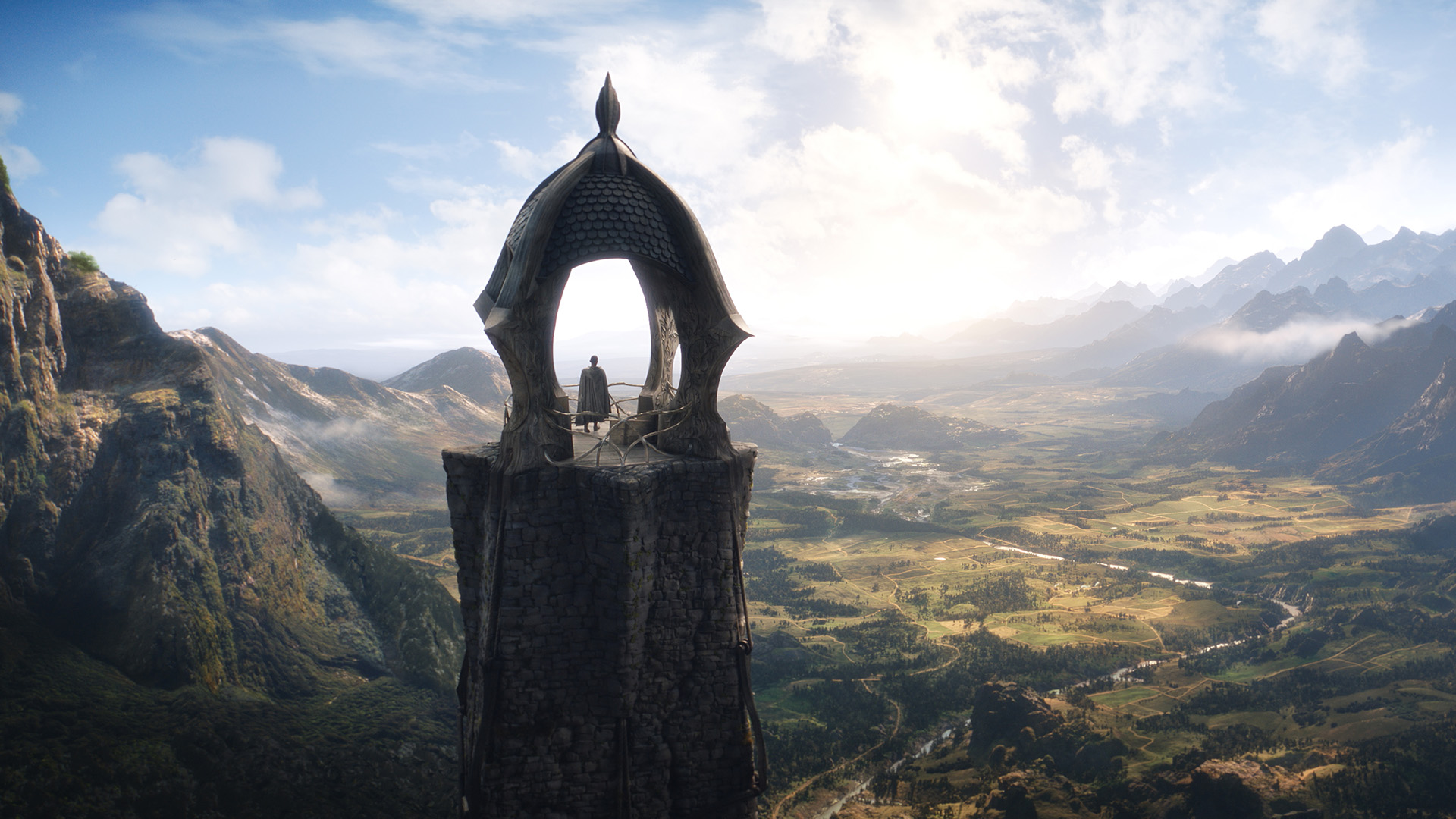
Set during Middle-earth’s Second Age, The Rings of Power tells the multi-narrative story of the forging of the titular Rings of Power, Sauron’s attempt to become the world’s tyrannical ruler, and how Middle-earth’s races band together to thwart his masterplan.
With five seasons comprising 10 episodes each – as long as its first season is successful – already plotted out, Amazon’s Lord of the Rings series is certainly ambitious. From a storytelling perspective, though, The Rings of Power needs to walk before it can run. This is a series that, despite some Tolkien fans' frustration, aims to condense 3,500 years of Middle-earth history into a tale that spans decades than millennia – a significant creative diversion from the source material.
So it’s unsurprising that the show’s first two episodes are entirely devoted to setting up its characters, locations, and various story strands. The premiere’s opening scenes are dedicated to covering important moments in Middle-earth’s First Age, such as the elves’ centuries-long war with Morgoth, aka Sauron’s master. It’s a history lesson – narrated by Galadriel (Morfydd Clark) – that provides essential context on events preceding the show’s main story. It’s similar to the prologue seen in Peter Jackson’s The Fellowship of the Ring movie, but goes deeper and further into Middle-earth’s history than its movie counterpart.
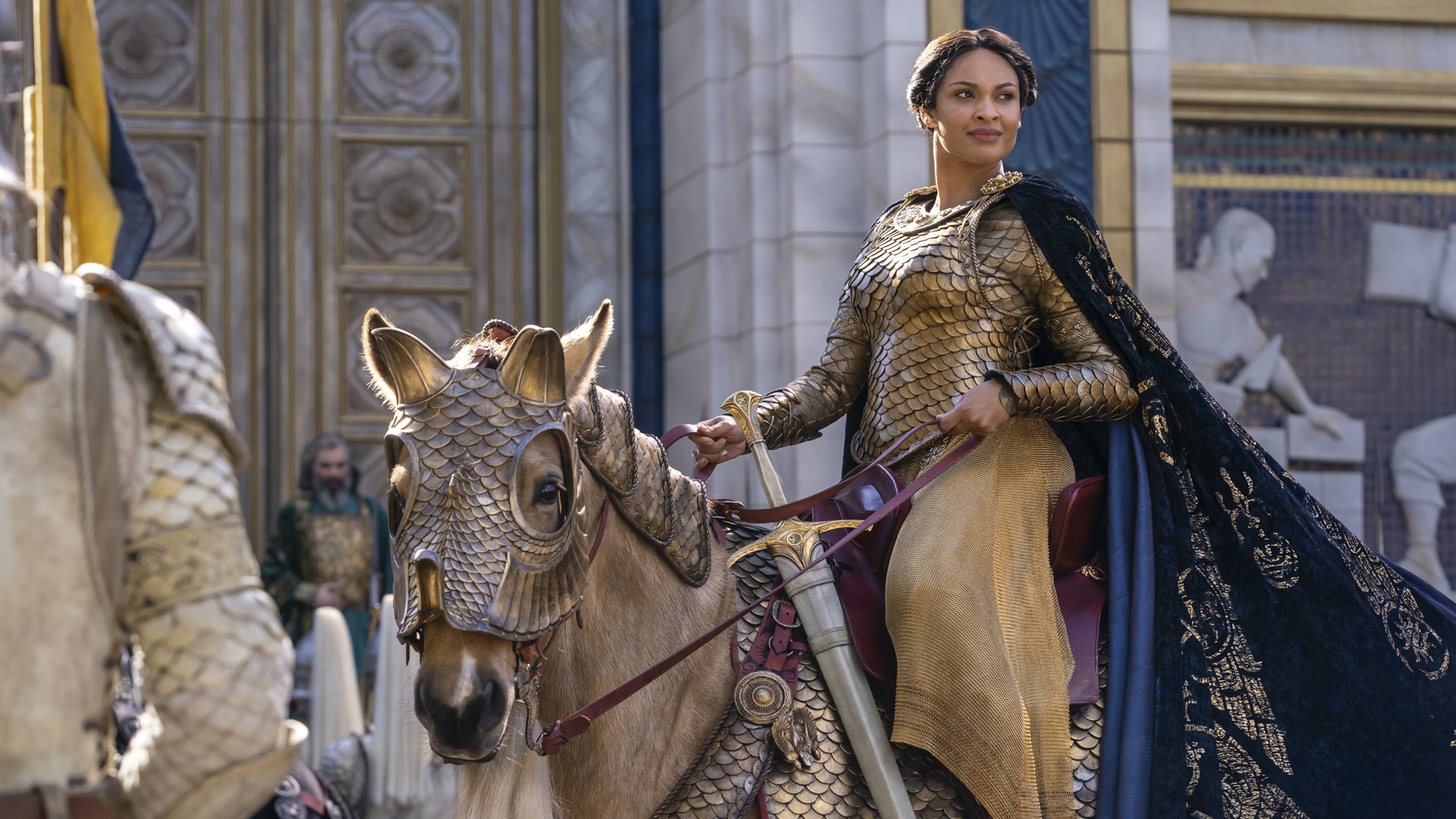
From there, the show takes viewers on a whistle-stop tour of its multiple races, core cast, and key locations. With 23 main characters and eight world regions – that’s discounting a ninth realm in Númenor, which doesn’t appear until episode 3 – Amazon’s Lord of the Rings has plenty of moving parts to establish.
Pleasingly, The Rings of Power productively blends these together. Taking inspiration from Jackson’s Lord of the Rings and Hobbit film trilogies, The Rings of Power uses a map of Middle-earth to jump between regions, introducing each territory’s major players and plot points as it goes.
The Rings of Power provides plenty of amusing, dramatic, and emotional moments
Like Game of Thrones, The Rings of Power routinely shifts between myriad locations, striking a largely satisfying balance between the time we spend in each realm and giving its core cast the necessary screen time to ingratiate themselves to audiences. It’s less concerned with the political backstabbing seen in HBO’s wildly successful show (and spin-off series House of the Dragon), and the horror machinations of Stranger Things, so viewers shouldn’t expect to see such similarities here. However, Amazon’s Lord of the Rings employs the multi-narrative approach that this trio of TV shows uses to great effect, allowing it to weave an intricate tale that occasionally prefers slick transitions – largely based on the Middle-earth map it implements – over hard cuts between scenes.
The Rings of Power’s setting and lack of extensive plot and character-specific source material means it doesn’t require an in-depth understanding of Tolkien’s works to enjoy it, either. It benefits from telling a story set in an age with relatively little background information – compared to The Lord of the Rings anyway – to draw from, negating the anxiety-inducing prospect of having to binge watch other shows and movies to catch up. That’s a big issue that newcomers to the MCU have to contend with, but this isn’t the case where The Rings of Power is concerned. Instead, it acts as a wonderful entry point to Middle-earth for Tolkien novices; one that doesn’t rely heavily on exposition dumps – the first episode’s prologue aside – to help audiences enjoy what’s on offer.
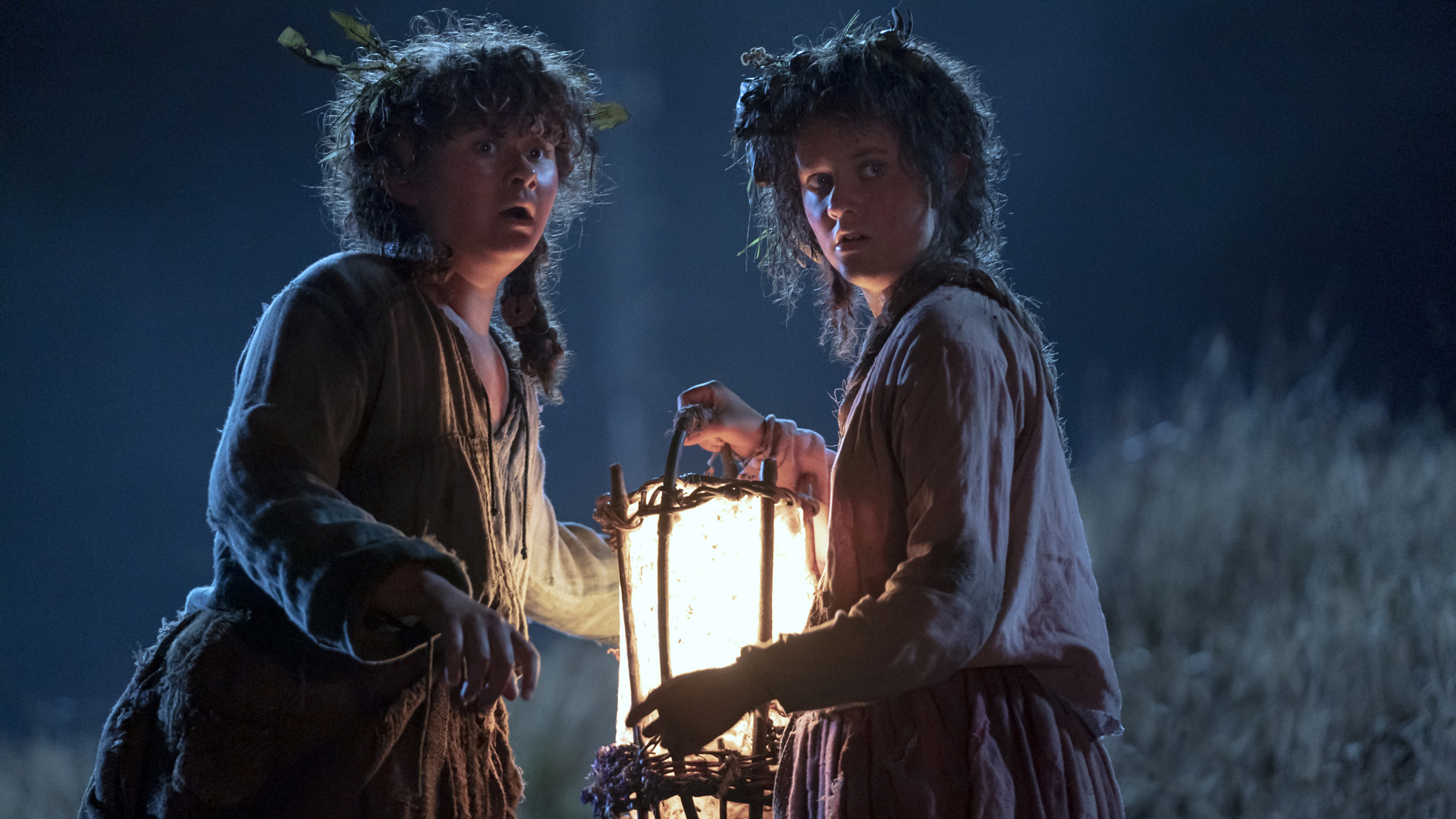
It should be noted that some storylines and subplots are weaker than others. The Southlands arc, which centers on silvan elf Arondir (Ismael Cruz Córdova), as well as human characters including healer Bronwyn (Nazanin Boniadi) and her troubled son Theo (Tyroe Muhafidin) is ground zero for evil’s return to Middle-earth. Significant though this is, it’s not as thrilling – save for a couple of tense, terror-fuelled Arondir-centric moments – as Galadriel’s more action-packed, multi-location tale, which is far more gripping stylistically and narratively.
Similarly, the Southlands plot isn’t as charming or supernaturally imbued as events concerning a hobbit precursor race called the Harfoots, or the emotionally-charged and diplomacy-led plot involving key personnel like Elrond (Robert Aramayo), Durin IV (Owain Arthur), Disa (Sophia Nomvete), and Gil-galad (Benjamin Walker). That said, non-Southlands story threads aren’t immune to the odd blip, with some scenes feeling pretty pedestrian or uneventful. Here’s hoping that season 1’s subsequent eight episodes fine-tune the equilibrium between its multiple narratives. Otherwise, The Rings of Power may suffer from similar storyline issues that occasionally plagued Game of Thrones.
Of elves and men (and dwarves and harfoots)
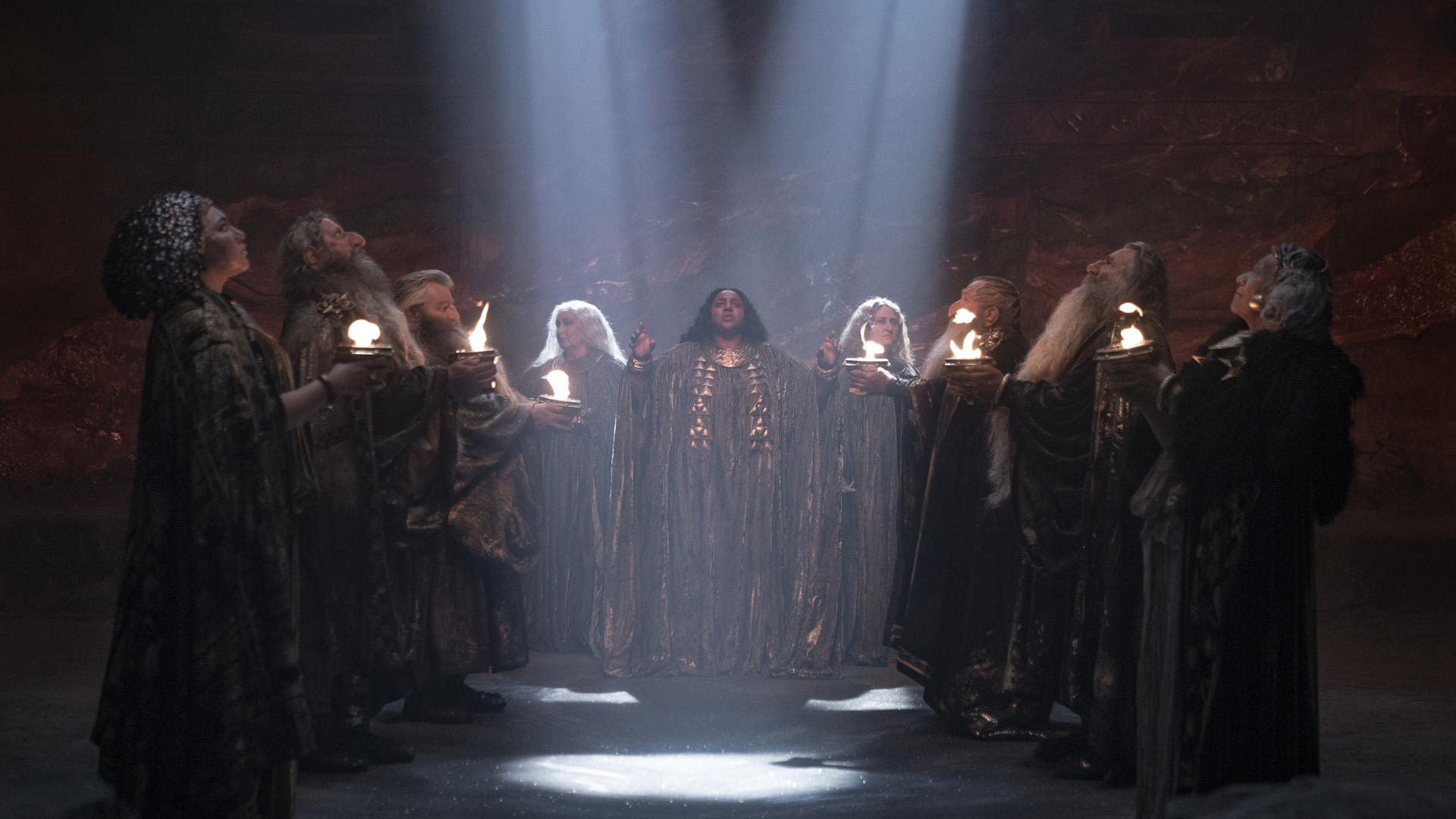
While there are some problems with The Rings of Power’s branching narratives, the same can’t be said of its talented cast.
For one, characters that diehards and casual fans already know, such as Galadriel and Elrond, are younger and more inexperienced than the versions in Jackson’s movies, providing ample opportunity to explore how they become the individuals we see in the Third Age.
Delightfully, Clark and Aramayo bring many new dimensions to their respective characters. Clark’s hot-headed Galadriel is imbued with a steely and stubborn resolve; a sharp contrast to the ethereal and mythic version she becomes. Meanwhile, Aramayo’s Elrond possesses a naivety and youthful exuberance that belies the cautious but wise persona we previously met in The Lord of the Rings. These conflicting personalities make for captivating encounters between Galadriel and Elrond in The Rings of Power, as well as other characters within their sphere of influence; verbal jousts that are riveting to watch. That conversations between Galadriel and Elrond, in particular, happen in person – they only share one physical conversation in all of Jackson’s movie adaptations – is all the more pleasing, too.
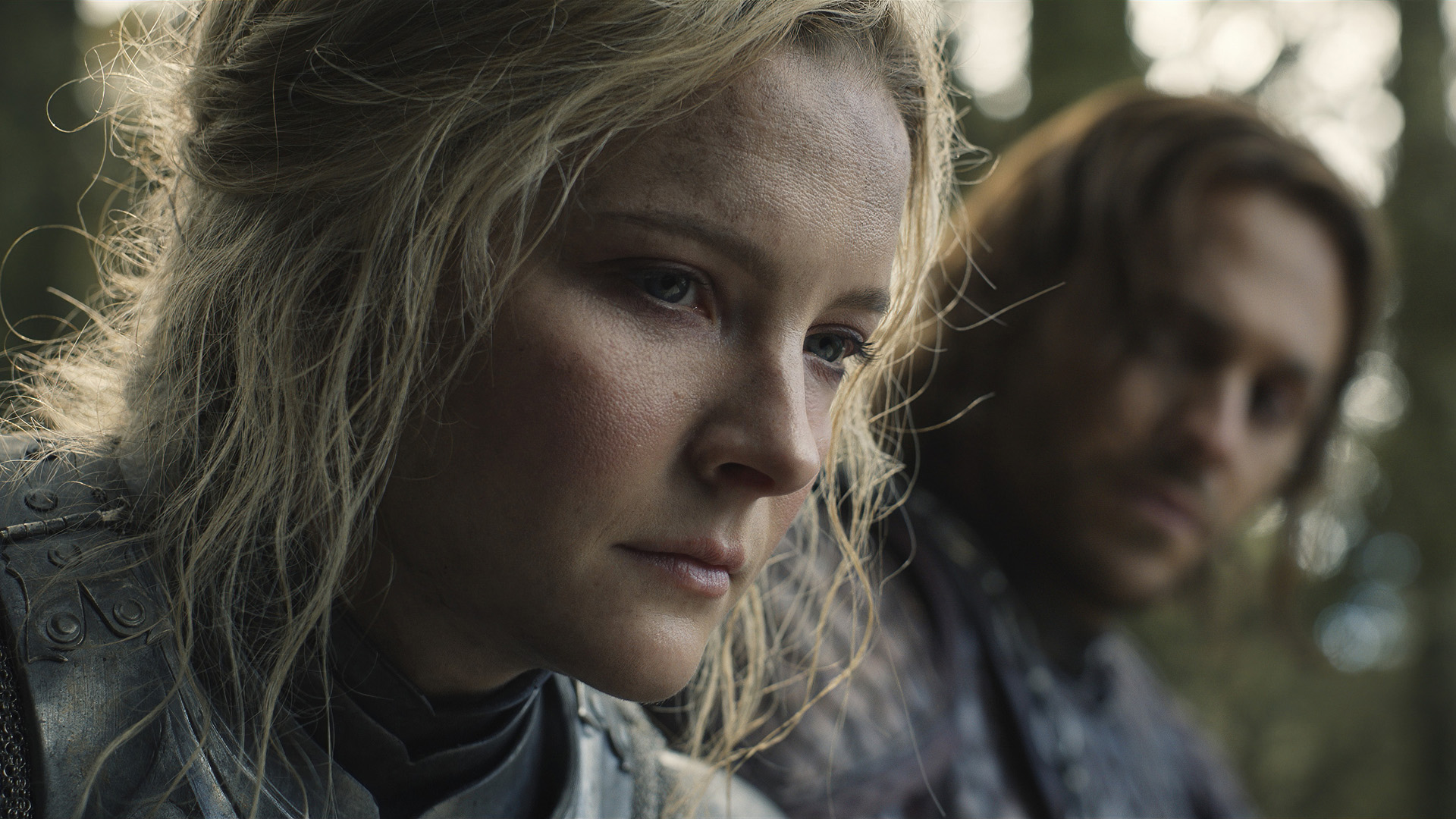
It’s not just Clark and Aramayo’s elven pair that shine. Harfoot duo Nori Brandyfoot (Markella Kavenagh) and Poppy Proudfellow (Megan Richards) bring levity, curiosity, and goodwill in a manner reminiscent of Merry and Pippin from The Lord of the Rings. Dwarven pair Durin IV and Disa (Sophia Nomvete) provide equal parts humor and heart to the cavernous halls of Khazad-dûm, too; the latter being particularly poignant as dwarves have generally been used as the comedy relief in live-action Lord of the Rings productions. Even the mysterious Stranger (Daniel Weyman), a character many fans have speculated on since the first trailer was released, brings something unique to the equation, with Weyman’s predominantly physical performance amplifying the enigma surrounding him.
Partnerships between various characters – unexpected or otherwise – also make for engrossing viewing. Whether it’s Galadriel’s initially distrustful encounter with human outcast Halbrand (Charlie Vickers), Durin’s complex and decades-long bond with Elrond, or Arondir’s Shakespearean-style forbidden romance with Bronwyn, the continual shifts in character dynamics within The Rings of Power provide plenty of amusing, dramatic, and emotional moments. Expect more politically fraught and tense exchanges to play out with the introduction of the Númenóreans and Bridie Sisson’s cryptic, unnamed character and her gang of white robed, secondary antagonists.
Absent action and amazing architecture
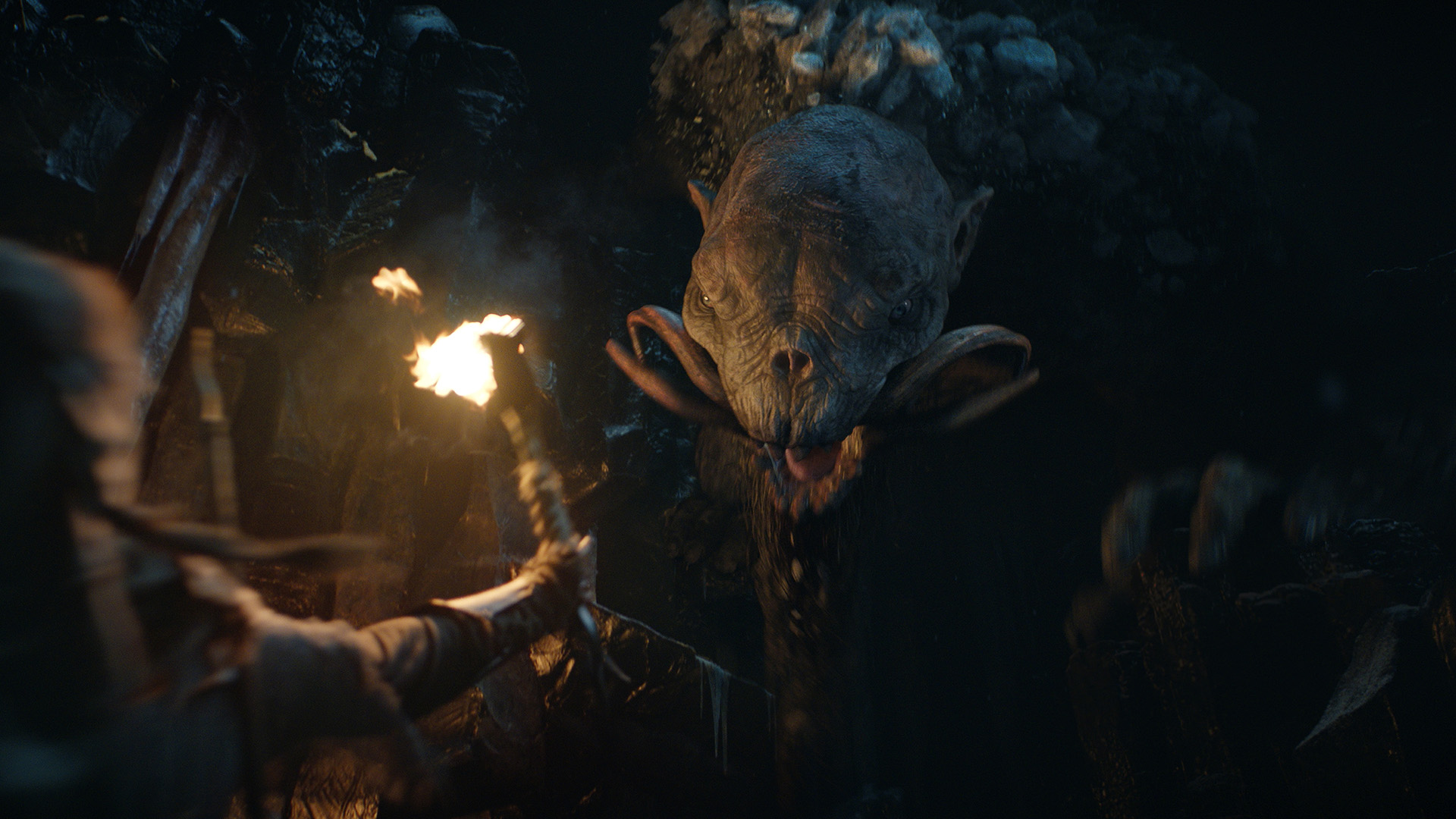
Disappointingly, The Rings of Power’s opening episodes are lacking in the scintillating set-piece department. That’s somewhat expected, given the sheer amount of setup required to immerse audiences in the show’s richly detailed world.
Still, save for a few brief skirmishes, The Rings of Power is devoid of truly spectacular action sequences that’ll thrill viewers. The series is sure to find its footing in this area once all of its principal characters and locations are established – based on the trailers, there are sizable set-pieces to come in the show’s first season. Even so, a stirring or electrifying action sequence – maybe a longer sequence depicting the War of the Elves and Sauron? – wouldn’t have gone amiss.
The Rings of Power doesn’t just handle pressure – it spectacularly thrives on it
Conversely, The Rings of Power’s production design is astonishingly detailed. Yes, numerous scenes utilize green and blue screen technology to varying degrees of success. Mostly, sequences with VFX backgrounds and CGI characters blend seamlessly with physical sets, but there are instances – Galadriel’s ship heading to Valinor, for example – where green screen use is frustratingly noticeable.
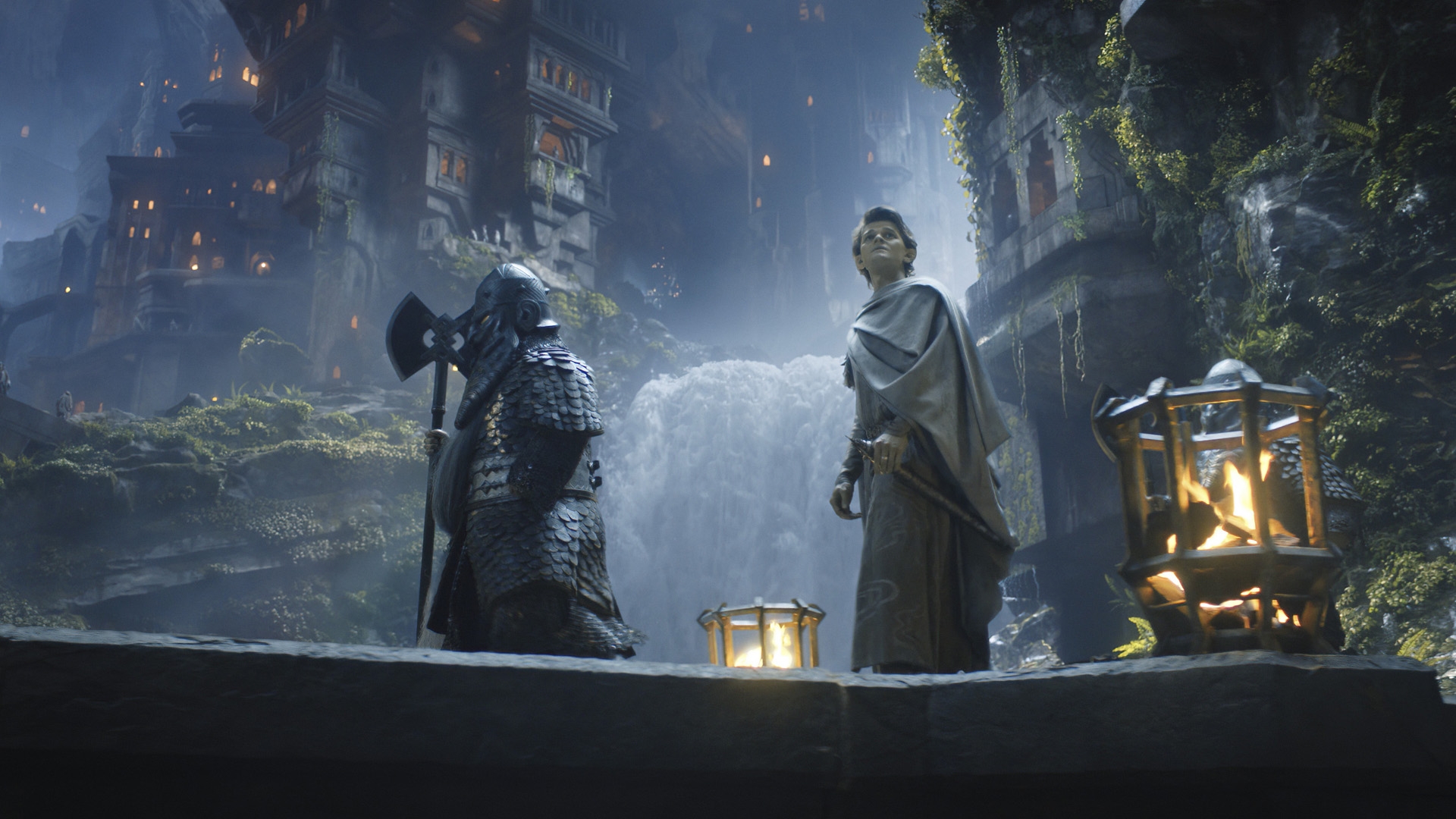
However, those occasional moments don’t detract from the stunning and richly intricate physical sets built for the show. Some critics will point to the first season’s $465 million budget as evidence that such elaborate sets would be prerequisites for a series of this scale. Even so, they’re environments that needed to be painstakingly crafted to bring a real sense of authenticity to proceedings, and allow places such as Khazad-dûm, Lindon, Rhovanion, and Tirharad to feel real and lived in. Each environment is sure to contain multiple references and Easter eggs to Lord of the Rings’ wider history, too; a goldmine for Tolkienities wanting to scour scenes to find even the most inconspicuous of secrets.
No matter how much cash Amazon threw at The Rings of Power, there’s no substitute for production – and costume – design. Thankfully, The Rings of Power benefits hugely from the throng of Lord of the Rings fans among its behind-the-scenes crew, whose due care and attention ensured it’s an astounding visual feast for the eyes.
That extends to its soaring cinematography (delivered by Aaron Morton, Alex Disenhof, and Oscar Faura), too, which bears the hallmarks of Andrew Lesnie’s spectacularly sweeping aerial shots and fantastic flair for character close-ups from Jackson's movie trilogies – frames more than ably supported by Bear McCreary’s anthemic and, when necessary, beautifully muted musical score.
Our verdict
The Rings of Power is fantasy-based prestige television at its absolute best. It invites you to explore Tolkien’s familiar world through fresh eyes thanks to its novel setting and eclectic cast of characters, while its labyrinthine plot has only just begun to set up ominous and more foreboding events to come. Equally, though, it doesn’t neglect the source material, as Amazon’s Lord of the Rings captures the core essence – namely, the magic and mystique – of Tolkien’s iconic works in all aspects of its production.
Based on The Rings of Power’s opening episodes, Amazon Studios is onto a winner with its latest big-budget offering. Some critics will argue that’s what $465 million will typically get you, but Amazon’s monetary outlay didn't guarantee The Rings of Power’s would be received well by fans and critics alike. It could have been the most expensive flop in TV history – a monumental failure that, according to industry insiders, might lead to the shutdown of Amazon’s Prime Video streaming service completely.
And yet The Rings of Power doesn’t just handle the pressure of being a Lord of the Rings production – it spectacularly thrives upon it. Quite honestly, it feels like a near-perfect adapted piece of literature ripped right out of Tolkien’s hugely popular novels – and what greater honor could a live-action Lord of the Rings project receive than that?
The Rings of Power launches exclusively on Prime Video on Thursday, September 1 in the US and Friday, September 2 in other world regions.
As TechRadar's senior entertainment reporter, Tom covers all of the latest movies, TV shows, and streaming service news that you need to know about. You'll regularly find him writing about the Marvel Cinematic Universe, Star Wars, Netflix, Prime Video, Disney Plus, and many other topics of interest.
An NCTJ-accredited journalist, Tom also writes reviews, analytical articles, opinion pieces, and interview-led features on the biggest franchises, actors, directors and other industry leaders. You may see his quotes pop up in the odd official Marvel Studios video, too, such as this Moon Knight TV spot.
Away from work, Tom can be found checking out the latest video games, immersing himself in his favorite sporting pastime of football, reading the many unread books on his shelf, staying fit at the gym, and petting every dog he comes across. Got a scoop, interesting story, or an intriguing angle on the latest news in entertainment? Feel free to drop him a line.
